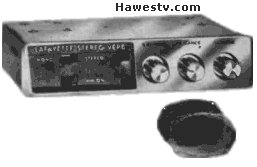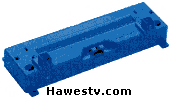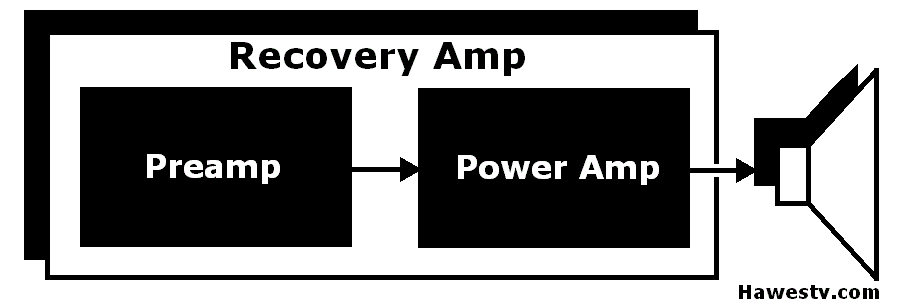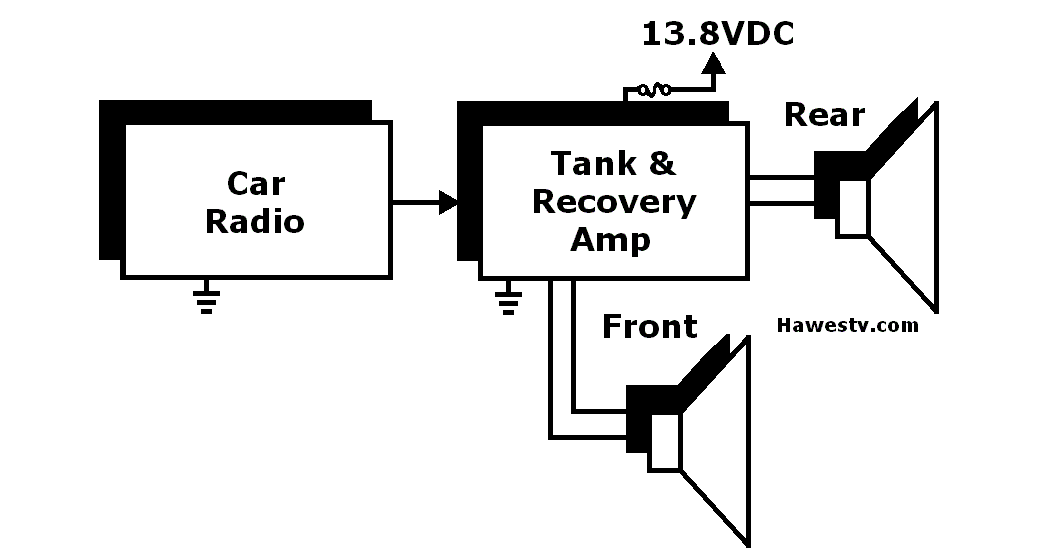| Hawes Amplifier Archive |
|
| Car Reverbs | ||||||||||||||||||
|---|---|---|---|---|---|---|---|---|---|---|---|---|---|---|---|---|---|---|
|
|
Three Parts of Car ReverbThe secret of car reverb lay inside an electromechanical device.

Typical car reverb system had three blocks, plus speaker. Exciter AmplifierIn a classic car reverb unit, the car radio served as the exciter amp. The radio produced a varying electrical signal. The signal current was strong enough to energize the input transducer in the spring tank. (Engineers refer to such signals as high-level signals.)
Tank operation. The tank was a box containing one to four springs. Each spring provided its own delay period. These springs looked like the extensor springs that close screen doors. The tank didn't stretch the springs, though. Instead, these were torsion springs: A transducer at the end of each spring twisted or untwisted the spring. That is, each input transducer was a micro-motor. Inside this motor, the audio signal varied a magnetic field that in turn moved a crank. Crank motion from each transducer twisted one spring. Delay effect. The twist ran down the spring, a process which took time. The time interval was the delay period for that spring. The typical delay period for a car reverb was 33 milliseconds. (This period wasn't adjustable.) At the other end of each spring was an output transducer. This transducer was a micro-generator. In this generator, the twisting spring turned another crank. The generator converted the spring's mechanical motion back into a varying electrical current. Echo. A few sound waves rolled back to the start of the spring, bounced, and returned to the generator again. Here's where the reverb became an illusion generator: The listener perceived each bounce as an echo. Tank DemonstrationThe first minute and a half of the YouTube link (below) includes an animation of reverb spring action. Recovery AmpPreampThe recovery amp was necessary because of signal losses in the spring tank. At the tank output, the signal strength was weak. Also, the tank over-emphasized bass frequencies and attenuated (weakened) midrange frequencies. The tank obliterated most frequencies above the midrange. The preamp's RC filters accentuated midrange sound at 6 dB per octave. Below are the objectives of the preamp design.
Power AmpSpeaker output. The preamp fed the reinforced signal to a small power amplifier. The power amplifier was a current multiplier. This circuit raised a line-level signal to a high-level signal. The fortified signal drove the rear speaker. To reduce distortion, a feedback loop applied negative feedback across the audio band.
Footnotes
Go to Page: 1 2 3 4 5 6 7 8 9 10 11 12 13 Next
|
Contents
|
||||||||||||||||




